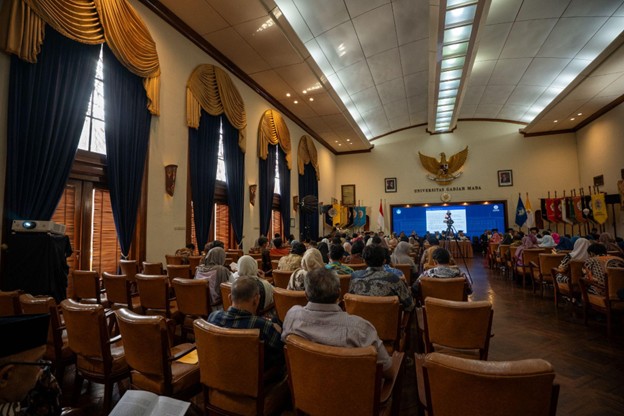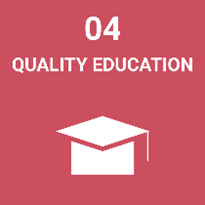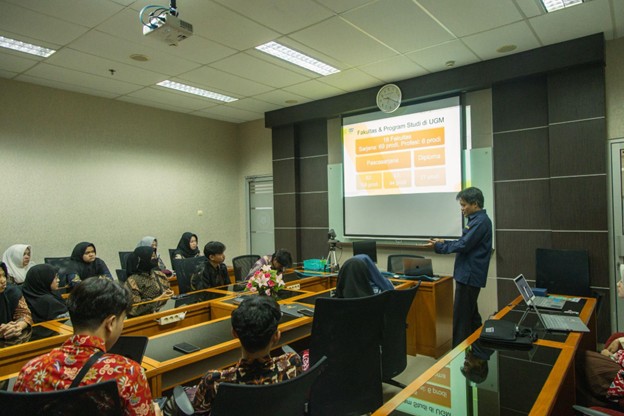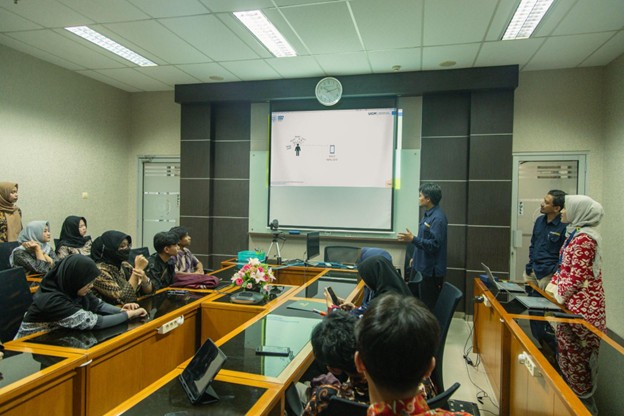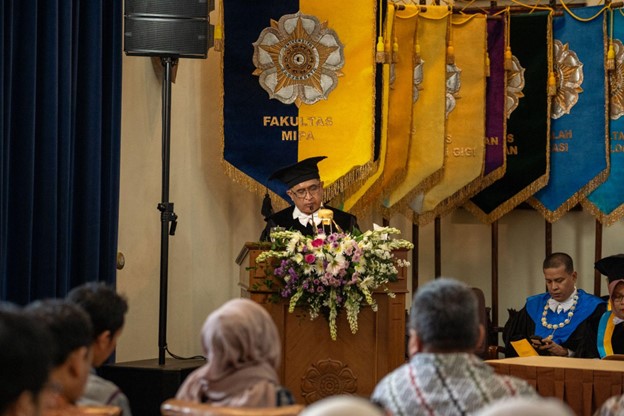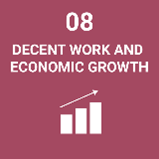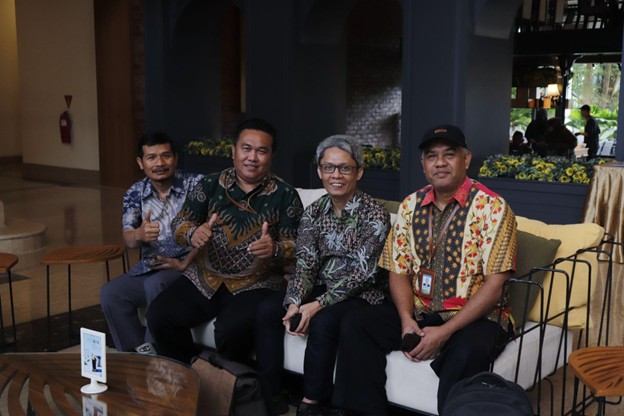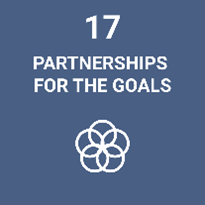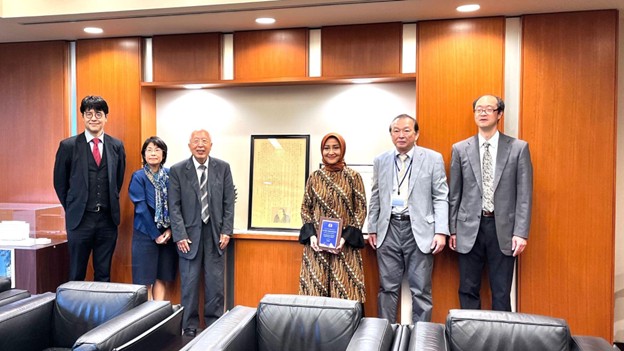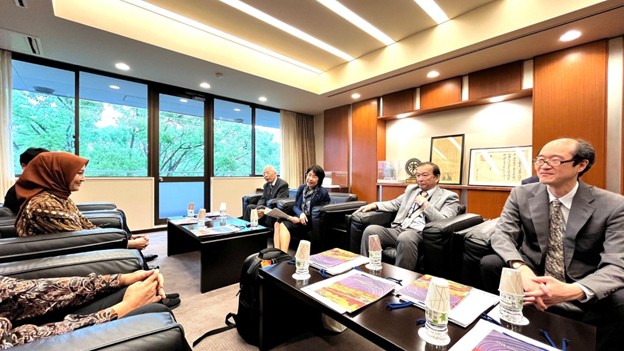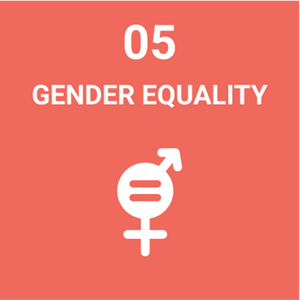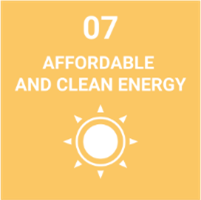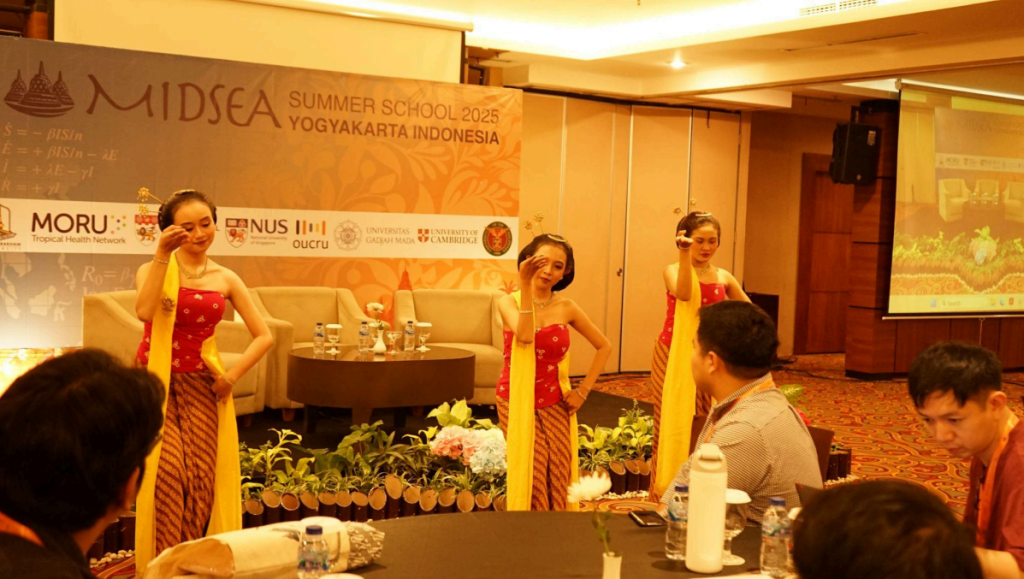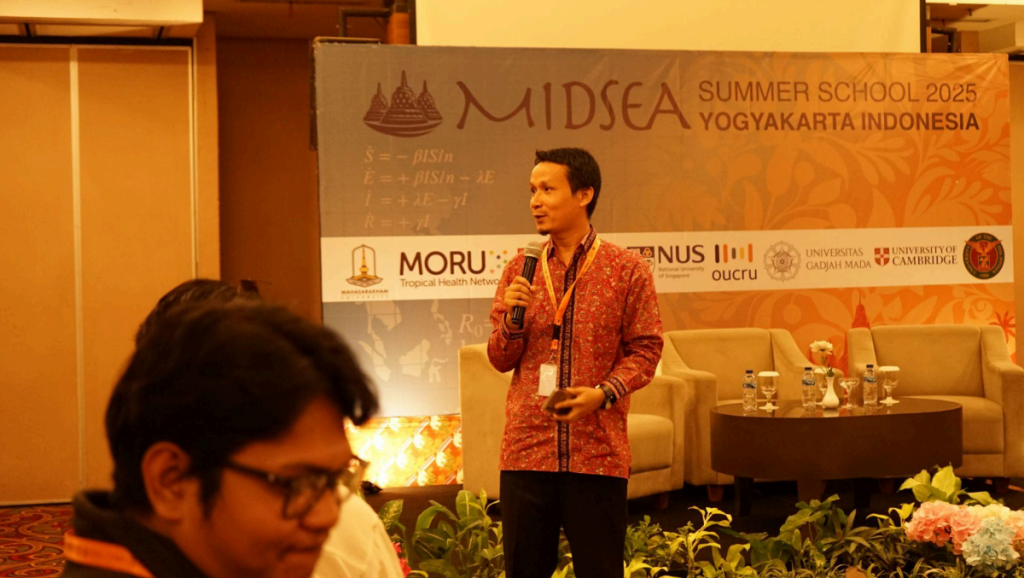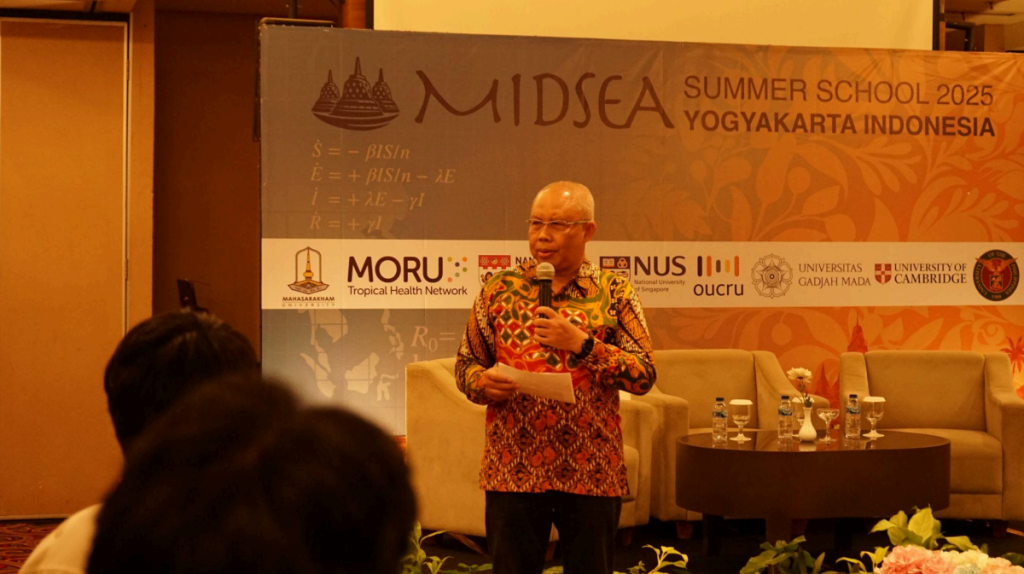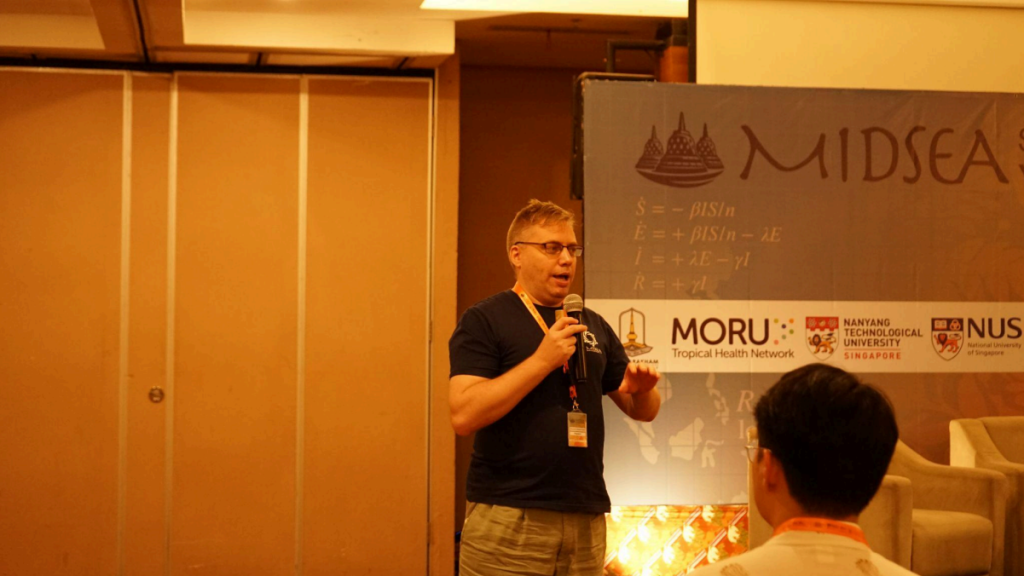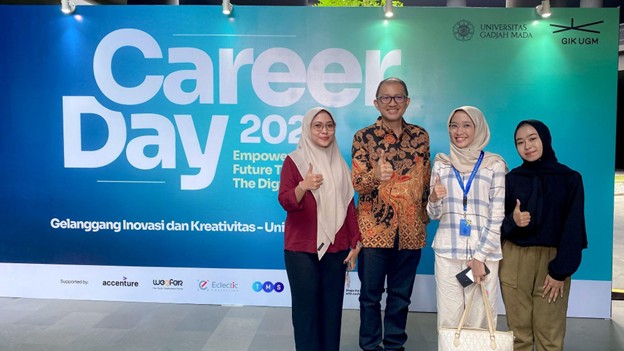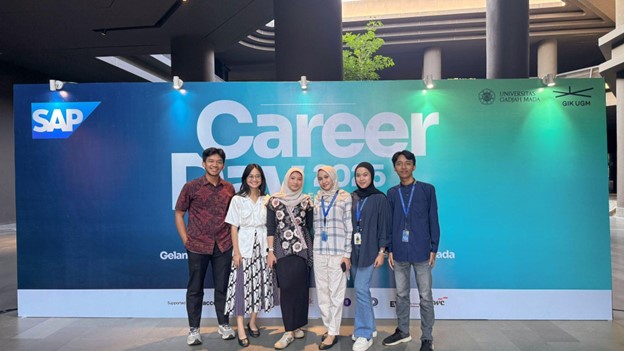
Prof. Dr. Drs. Gunardi, M.Si. Dikukuhkan sebagai Guru Besar Ilmu Aktuaria UGM: Membawa Teori Menjadi Realita
Pada 17 Juni 2025, bertempat di Balai Senat Universitas Gadjah Mada, Prof. Dr. Drs. Gunardi, M.Si. resmi dikukuhkan sebagai Guru Besar dalam Bidang Ilmu Aktuaria pada Fakultas Matematika dan Ilmu Pengetahuan Alam (FMIPA) UGM. Dalam pidato pengukuhannya yang berjudul “Dari Teori ke Realita: Kontribusi Matematika, Statistika, dan Stokastika dalam Ilmu Aktuaria”, beliau menekankan pentingnya peran teori dalam menjawab tantangan praktis dunia nyata, khususnya dalam bidang asuransi dan dana pensiun.
Mengawali pidatonya, Prof. Gunardi menyoroti sub-topik “Matematika: Fondasi Logika dalam Ilmu Aktuaria”. Dalam penjelasannya, beliau mengungkapkan bahwa matematika bukan hanya sekadar angka dan rumus, melainkan alat berpikir logis yang digunakan untuk memodelkan ketidakpastian. “Dalam praktik asuransi dan dana pensiun, konsep-konsep seperti present value dan anuitas sepenuhnya bertumpu pada prinsip kalkulus dan aljabar,” jelasnya. Ia juga menekankan pentingnya pemahaman terhadap variabel matematika, seperti X sebagai variabel bebas dan Y sebagai variabel tak bebas—dimana perubahan nilai X akan menentukan nilai Y secara langsung.
Beranjak ke sub-topik berikutnya, beliau membahas “Statistika: Jembatan antara Data dan Ilmu Aktuaria”. Menurutnya, teori yang kuat saja tidak cukup untuk menjawab dinamika kehidupan nyata yang penuh ketidakteraturan dan fluktuasi. Dalam hal ini, statistika hadir sebagai penghubung antara data empiris dan teori aktuaria. “Dunia nyata tidak ideal. Data yang kita hadapi seringkali tidak sempurna. Maka, statistika adalah alat penting dalam menafsirkan ketidakpastian tersebut,” ujar Prof. Gunardi. Ia juga menjelaskan mengenai variabel random, yang dalam teori probabilitas dan statistika digunakan untuk menggambarkan besaran kuantitatif dengan kemungkinan nilai yang bervariasi.
Menutup orasi ilmiahnya, Prof. Gunardi mengangkat tema Stokastika, cabang ilmu yang mempelajari proses-proses acak yang bersifat dinamis. Stokastika, menurutnya, berperan penting dalam membangun model-model aktuaria yang dapat memprediksi masa depan secara lebih adaptif. “Ketika ketidakpastian menjadi keniscayaan, stokastika membantu kita mengelolanya dengan cara yang rasional dan terukur,” paparnya.
Lebih lanjut, ia memperkenalkan konsep X(t) sebagai notasi umum dalam proses stokastik dan sistem dinamis. Dalam konteks ini, X(t) menggambarkan variabel acak yang berubah terhadap waktu. Dengan pendekatan ini, berbagai fenomena dunia nyata yang bersifat tidak pasti, seperti fluktuasi pasar keuangan, klaim asuransi, atau tingkat mortalitas, dapat dimodelkan secara matematis dengan struktur statistik tertentu. “Dengan menggunakan notasi X(t), kita tidak hanya memahami perubahan nilai dari waktu ke waktu, tetapi juga memprediksi pola dan kecenderungan berdasarkan data historis,” jelasnya.
Pengukuhan ini bukan hanya menjadi tonggak penting dalam perjalanan akademik Prof. Gunardi, tetapi juga menjadi momentum untuk menegaskan kontribusi nyata ilmu dasar seperti matematika, statistika, dan stokastika dalam pengembangan ilmu aktuaria di Indonesia. Selaras dengan tujuan Sustainable Development Goals (SDGs) poin ke-4, yaitu Quality Education, Prof. Gunardi melalui kiprah akademiknya berupaya memberikan pendidikan bermutu dengan pendekatan yang integratif dan aplikatif. Dengan menyatukan teori dan realita, ia berharap lulusan aktuaria di masa depan tidak hanya cakap secara akademik, tetapi juga mampu menjawab tantangan yang nyata di masyarakat.
Penulis: Amalia Nurmalitasari
Editor: Meitha Eka Nurhasanah
Dokumentasi: Aprodity Nirmala dan Raditya Maulana Adiwicaksana
